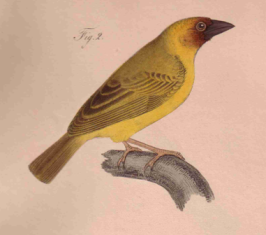Weaver species list / RELATED SPECIES: Eastern Golden Weaver / Golden-backed Weaver / Holub’s Golden Weaver / Juba Weaver / Katanga Masked Weaver / Lufira Masked Weaver / Ruppell’s Weaver / Southern Masked Weaver / Vitelline Masked Weaver
IUCN: Least concern Discovery: 043
Categories: acacias, gum, nectar, pest
Discovery
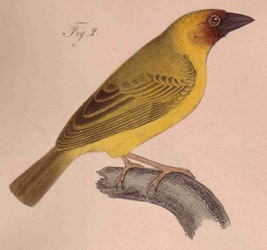 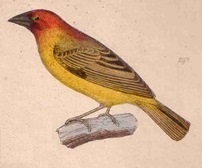 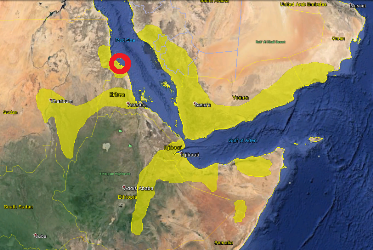
IntroductionThe Rüppell’s Weaver was formally described by Wilhelm Peter Eduard Simon Rüppell, a German naturalist and explorer, especially in north-east Africa. Rüppell was the first naturalist to travel through Ethiopia and many birds are named after him.Rüppell thought this species was an oriole, hence the latin name he chose (see below). He described a male, female and young bird, finding Rüppell’s Weaver to be a common species in the Modat valley on the coast of Eritrea, where he collected the specimens. On Rüppell’s third journey to Africa, in 1831-34, he travelled to the Sinai Peninsula, Egypt, and along the coast of the Red Sea to Massawa (Steinheimer 2005). It is unclear where the Modat valley lies, and the area of Massawa on the coast is considered the modern type locality for the Rüppell’s Weaver. Rüppell stayed in this area a few months at the end of 1831 and into early 1832. The first illustration of a Rüppell’s Weaver is a colour painting in Ruppell 1840. The next illustration is by Reichenbach (1863), also of an adult male. Scientific citationPloceus galbula Ruppell 1840 Neue Wirbelt., Vogel, p.92, pl. 32 (fig. 2); Modat Valley, Eritrea. Meaning of namesgalbula – Latin: a small yellowish bird (dim. of galbina, a small yellow bird; galbus, yellow). First English nameThe Oriole Weawer (Reichenbach 1863). Alternate namesCanary Weaver, The Oriole Weawer. CollectorEduard Rüppell. Date collected1831 or 1832. Locality collectedModat Valley [=Massaua area], Eritrea. Type specimensOne specimen is known to be in the Senckenberg Museum in Frankfurt (specimen 12644), but more types should still exist. |
The above is based on Weaver Wednesday 2, a weekly series about the discovery of each weaver species.
This species text first appeared as Weaver Wednesday [160] – Discovery [43]: Rüppell’s Weaver on 2015-07-08
1. Basic biology
The above is based on Weaver Wednesday, a weekly series about weaver species.
This species text first appeared as Weaver Wednesday [17]: Rüppell’s Weaver on 2012-10-10
2. Breeding facts
| Pair bond Polygynous, sometimes single male with up to three females and eight nests Breeding season Nest site Nest building Colony size Clutch size Egg colour Egg size Incubation Chicks and nestling period |
Breeding information based on Handbook of the Birds of the World, Vol. 15.
3. Photos of Weaver Nests
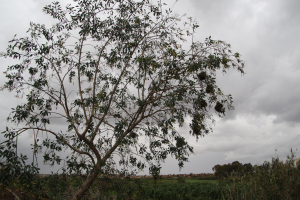 Vm 27671 |
 Vm 26602 |
 Vm 26601 |
 Vm 5639 |
 Vm 2484 |
 Vm 710 |
Thumb-nails of recent PHOWN records

